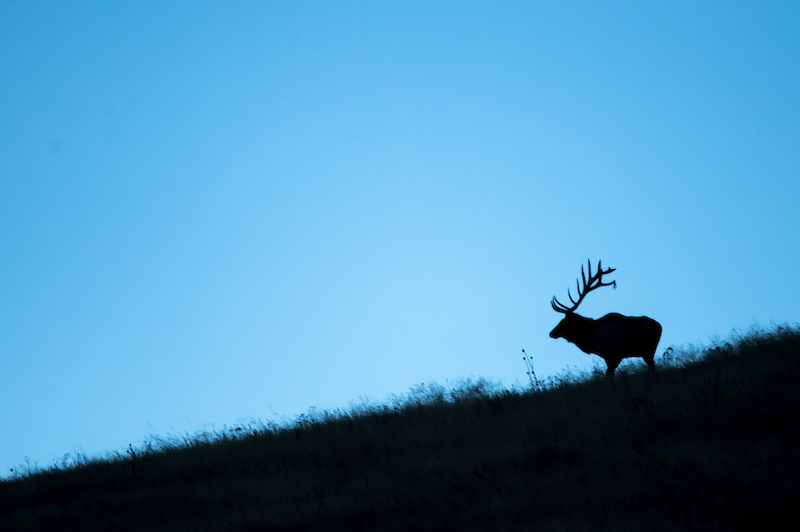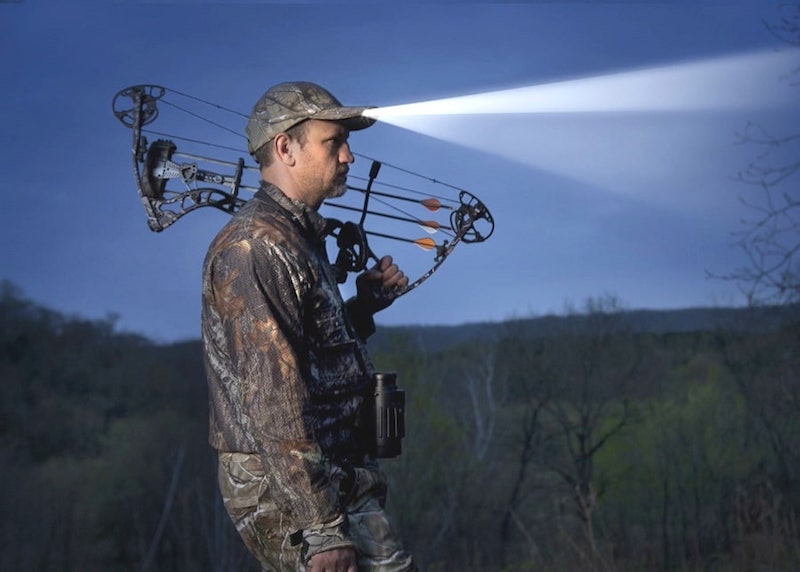Life is full of decisions: Hamburger or hot dog? Apple or Android? Baseball or football? Morning or evening hunts?
Answering that final question is tough. Work, school, sports and family obligations limit a bowhunter’s time afield. Many seek balance by hunting prime time only. If you have mere hours to fill a tag, should you hunt near dawn or dusk?

Hunting in the morning gives you time during the daylight to track your harvest. Photo Credit: John Hafner
The morning offers more reasons to hit than woods than just your early-bird personality. Daylight’s first few hours can be action-packed with moving game. Elk and deer often move in dawn’s low light as they finish feeding before bedding for much of the day.
Intercepting their travels from feeding to bedding grounds often gives bowhunters exciting opportunities. Find a bedding area and a game trail connecting it to a food source, and hang a trail camera during preseason to scout. If your camera proves animals often move in the morning, hang a treestand. Realize, though, that a big challenge for morning treestand hunts is getting there silently and undetected in the dark.
If you get a shot, you’ll be thankful for the daylight. Tracking a bloodtrail and finding the animal are much easier tasks during daylight. Another benefit is that predators probably won’t find your animal before you do. A third benefit? Field-dressing chores are usually easier in sunlight than with a headlamp.
During the rut, you’ll often see more animal movement throughout the day, but mornings can be downright awesome. Dawn is often called “happy hour” because bucks are looking for ladies before bedding down after a long night. And if you’re bowhunting elk in September, nothing beats bugling bulls at sunrise. Bugles get your blood pumping and help you locate bulls to hunt.

Hunting at night may mean tracking in the dark. Headlamps can help you find your trail. Photo Credit: Wilderness Mastery
Sometimes the ticket to success is sitting in your treestand after work or school. For many bowhunters, evenings are the only time they’re free to hunt. Big-game movements increase during those final hours of daylight as animals head out to eat before the sun and temperatures drop.
Get ready for it by hanging a treestand along a game trail or feeding area. It’s often easier to approach treestands for evening hunts without spooking game.
Even if you can only get out a few hours at midday, be optimistic. On hot days, elk, whitetails and pronghorns often visit watering holes. Sitting in a blind or above in a treestand near water are effective midday tactics. And if you can wait out a string of hot days, cooler weather can trigger all-day movement as animals catch up on feeding. Meanwhile, during the rut, bulls and bucks often travel large areas in search of females.
Hunting the gray light of dawn and dusk is often your best shot at success. Watch the wind to ensure you don’t blow your cover, and stay as silent as possible the nearer you get to your hunting site. Whether it’s by choice or circumstance, hunts during mornings or evenings often yield the best results.